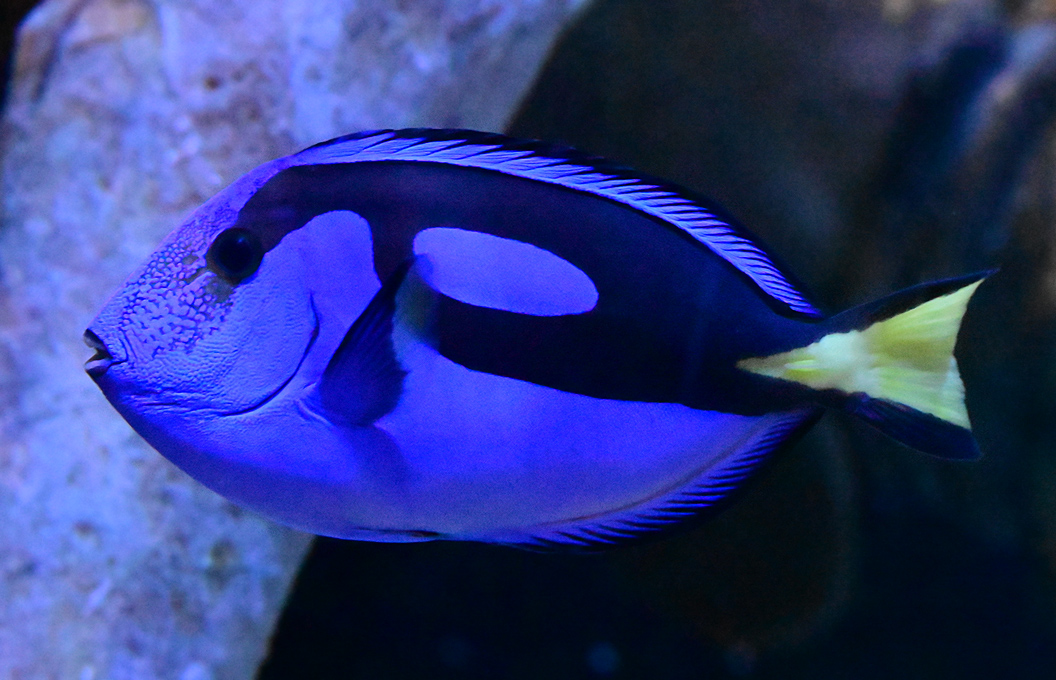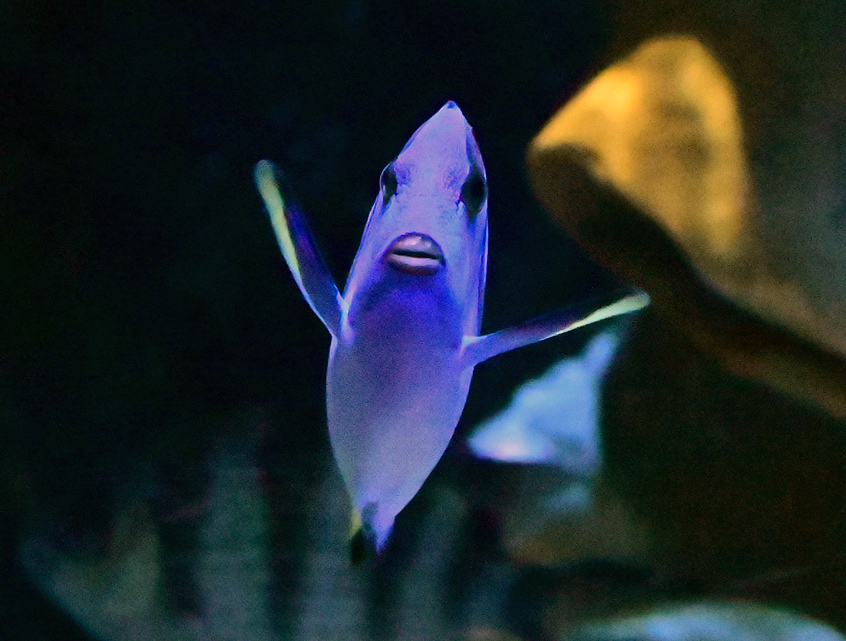
|
Blue Tang
Paracanthurus hepatus
Other Names: Regal tang, palette surgeonfish, royal blue tang, hippo tang, blue hippo tang, flagtail surgeonfish, Pacific regal blue tang, and blue surgeonfish. There is also a completely different fish, Acanthurus coeruleus, which lives in the Atlantic Ocean, that's also called Blue Tang. Family: Acanthuridae, the family of surgeonfishes, tangs, and unicornfishes. Around 86 species in total, which live in tropical waters, usually around coral reefs. Size: To 31 cm Weight: Adults typically weigh around 600 grams. Distribution: The Blue Tang can be found throughout the Indo-Pacific. It is seen in the reefs of the Philippines, Indonesia, Japan, the Great Barrier Reef of Australia, New Caledonia, Samoa, East Africa, and Sri Lanka. In Australian waters it's found along the QLD coast, and as south as mid-NSW. Status: Least concern Habitat: Coral reefs, the Blue Tang hides among branching coral. References: Kuiter, Edgar, Stuart-Smith et. al, Wikipedia. About the Blue TangThe Blue Tang, has a bright royal blue body, yellow tail, with black patches/swirl in a "palette" shape. They are rather flat, like a pancake, with a circular body shape, a pointed snout-like nose, and small scales. In the 2003 Disney/Pixar film "Finding Nemo", one of the main characters, Dory (voiced by Ellen DeGeneres) is a blue tang. Weight: Adults typically weigh around 600 grams. Habits: They live in pairs, or in small groups of 8 to 14 individuals. Diet: Mostly feeds on zooplankton, sometimes they also eat algae. Danger: The Blue Tang can cause ciguatera poisoning if consumed by humans. Handling the tang risks the chances of being badly cut by the caudal spine. These spines, on both sides of the caudal peduncle, are extended from the body when the fish becomes excited. The quick, thrashing sideways motion of the tail can produce deep wounds that result in swelling and discoloration, posing a risk of infection. Economics: The regal blue tang is one of the most common and most popular marine aquarium fish all over the world.
See Also
Australian Mammals Share This PageContent is copyright © Survival.ark.au 2005-2024 All Rights Reserved. Terms of Use. Definitely read the disclaimer before trying anything from this website, especially including the practices and skills. This website uses affiliate links – this doesn't cost you any more, but I get a commission on purchases made through the website. As an Amazon Associate I earn similarly from qualifying purchases. |



